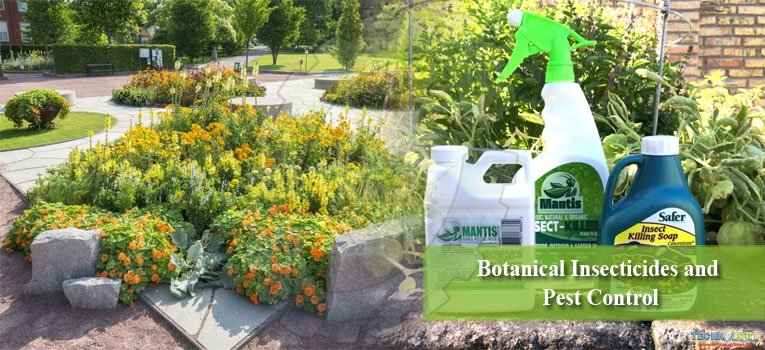Today the most important global problems is protecting crops from insecticides. Herbivorous insects are considered for destroying one-fifth of the world’s total crop production annually.
Botanical Insecticides and Pest Control
Mostly in the tropics and subtropics, where the climate provides an extremely favorable environment for a wide range of insects. In the developing countries, the problem of controlling insect pests has become extra complex because of human population which is increasing day by day.
Some insect species feed on the endosperm causing loss of quality and weight, while some species feed on the germ, resulting in reduction of seed capability and germination. Thus due to damage by insects grain loss their value for consumption, planting and marketing.
In addition to direct consumption insect pest contaminate their feeding media through excretion, dead bodies and by their own presence in the product, which is not commercially appropriate. Damage done by insects emboldens infection with fungal and bacterial diseases through transmission of their spores.
For the control of insects, synthetic chemicals are constantly used, and their toxicity imperils health of farm operators, animals and food consumers. The negative effects on human health let to a revival of attention in botanical insecticides due to their minimal costs and ecological side effects.
Conventionally used botanical insecticide products include nicotine, rotenone, ryania, sabadilla and pyrethrum. Nicotine is a plant alkaloid, found in the tobacco plants, and addictive central nervous system (CNS) stimulant that causes either ganglionic stimulation in low doses or ganglionic blockage in high doses. Rotenone is the trade name of the insecticide derived from extracts of the tropical legumes Derris and Lonchocarpus.
The main active principle, the iso-flavonoid rotenone is abstemiously toxic to mammals due to reduced amount of absorption and rapid metabolism Rotenone has been widely available as plant extract at reasonable cost and used as a dust on horticultural and ornamental crops.
Sabadilla is the seed extract of the Neotropical lily Schoenocaulon officinale which contains veratridine alkaloids which have a neurotoxic mode of action.
The extract has low mammalian toxicity and used as contact insecticide against a large number of agricultural insects such as Lepidoptera, leafhoppers, and thrips. Ryania is an extract of from the South America shrub Ryania sp. Containing the diterpene alkaloid ryanodine which is a contact and ingested insecticide against horticultural and ornamental crop pests. It exerts its toxicity by blocking Ca++ ion channels.
Pyrethrum is now the most important traditional botanical insecticide on the market. It is derived from the African daisy, Chrysanthemum pyrethrum, which produces an insecticidal oleoresin that can be extracted with organic solvents and pyrethrum extract contains six major pyrethrin compounds: pyrethrin I and II, jasmolin I and II and cinerin I and II.
Pyrethrin is valued for its quick knockdown of flying insects especially of mosquitoes and houseflies, but is effective against a wide variety of home and garden and nuisance insects, due to its action on the insect nervous system at the Na+ channels. It has low mammalian toxicity but does have significant toxicity to fish and aquatic invertebrates. Synthetic pyrethroids have become major commercial products over natural pyrethroids.
Botanical insecticides effect insects in many different ways depending upon the type of plant and physiological characteristics of the insect species. It generally include repellents, toxicity feeding, anti-feedants, growth retardants, attractants and chemosterilants.
Despite from advantages, most of botanical products are not truly insecticides since many are merely insect deterrents and their effect is slow. Most of them are rapidly degraded by UV light so that their residual action is short. Not all plant insecticides are less toxic to animals and humans than the synthetic ones.
It would be a big mistake to consider products of plants origin harmless just because they are natural. Schmutz and Breazeale (1986), in their book ‘plants and poison’ pointed out around 120 species of plants containing substance that are toxic to humans.
An ideal insecticidal plant should be a perennial. It should be widely distributed in nature in case if not it should be possible to grown by agriculture techniques. The plants should require small space, cheap management and little water and fertilization. The plant should have additional uses for example medicinal use. The active ingredient should be at low rates but effective.
Author: Sumer Zulfiqar 1
1 Department of Entomology, University of Agriculture Faisalabad.